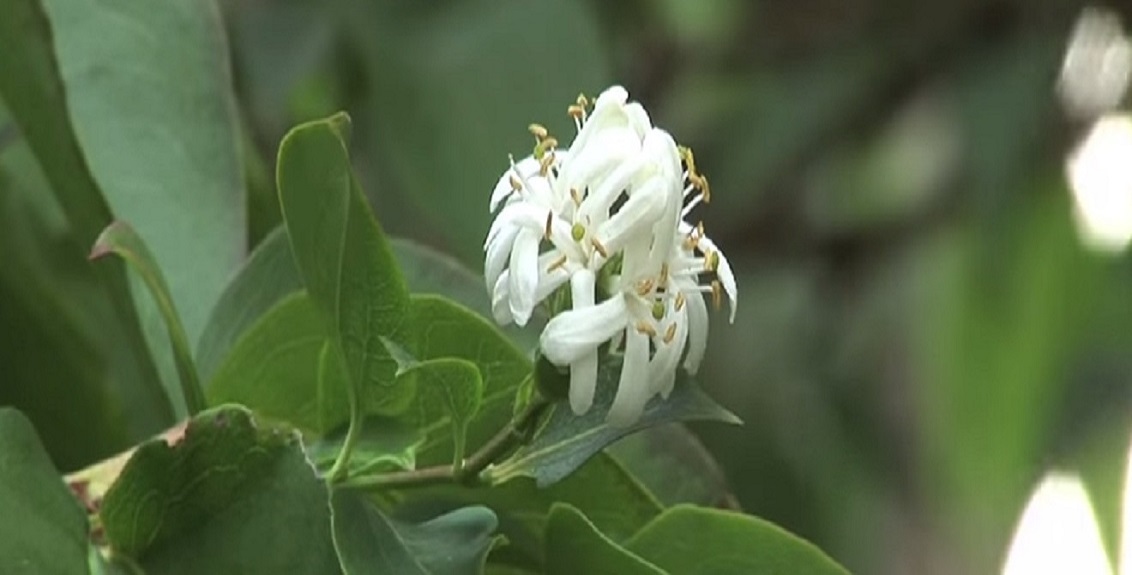From early September through to the first frost, Heptacodium will send out clusters of white fragrant blooms that attract butterflies, bees and other pollinators. After the flower petals drop, bright to deep red calyxes remain on the plant through October and into November. This long display of flower and calyx make this shrub a great autumn focal point. This member of the honeysuckle family is better known in North America, where people sometimes call it Seven Sons flower.
Plant Information
- Heptacodium grows to nine or ten meters high, about thirty to thirty-six feet, with a spread of about a third of that. The shape is generally upright and vase-like.
- It prefers full sun to partial shade, any well-drained moderately fertile soil and very little care.
- It will tend to start out as a multi-stemmed shrub, so if you want a tree form, some judicious pruning of the stems coming out of the ground would be good, but otherwise no pruning is generally necessary.
- There are no insect or disease problems to worry about with this plant, so once you find it at the better nurseries, or by mail order, you will have a wonderful specimen in a few short years.
Hepta means seven and refers to the number of scented white flowers that grow at the ends of its branches. Butterflies love Heptacodium almost as much as Buddlea.
- It is very showy: the flowers fall with the first frosts but their calyxes remain, turning pink before darkening to burgundy.
- Sometimes it produces scarlet berries too, like those of a honeysuckle, in a display that can last for weeks. Then, in winter, the bark of older plants is textured grey, while the newer, smaller branches are the darkest lacquer-red.

Even out of its season, in spring and early summer, Heptacodium has leaves that are interesting enough to rate a second look. They are often glossy and dark with deeply marked veins, and are elegantly arranged in drooping pairs, at right angles until they reach the end of the stem when they part at 45 degrees instead.
Heptacodium is an enormously stylish plant and the reason it is not better known is that it has been available in the UK only for a couple of decades. It was introduced to North America early last century then disappeared, until it was re-discovered in China by the Arnold Arboretum.
Growing tips
Heptacodium is a fast grower and optimum conditions are moist, acid woodland soil, not too shady. If it grows too large and unmanageable careful shaping can reduce it, and it is probably wise to remove twiggy growth from low down so the bush does not become too wide.
Propagation
It does make suckers, which can be propagated. Heptacodium will also root from hardwood cuttings in autumn. You can even grow it from seed, as long as you’re not in a hurry.
Companion Planting
Plant spring-flowering bulbs such as Erythronium at the feet of your Heptacodium to provide interest at the time of year when the shrub is not the main focus. Hemerocallis leaves provide a piercing early green presence and if you choose the classier H. lilioasphodelus, which also comes from China, the group will have an oriental delicacy that coarser flowers might spoil.
